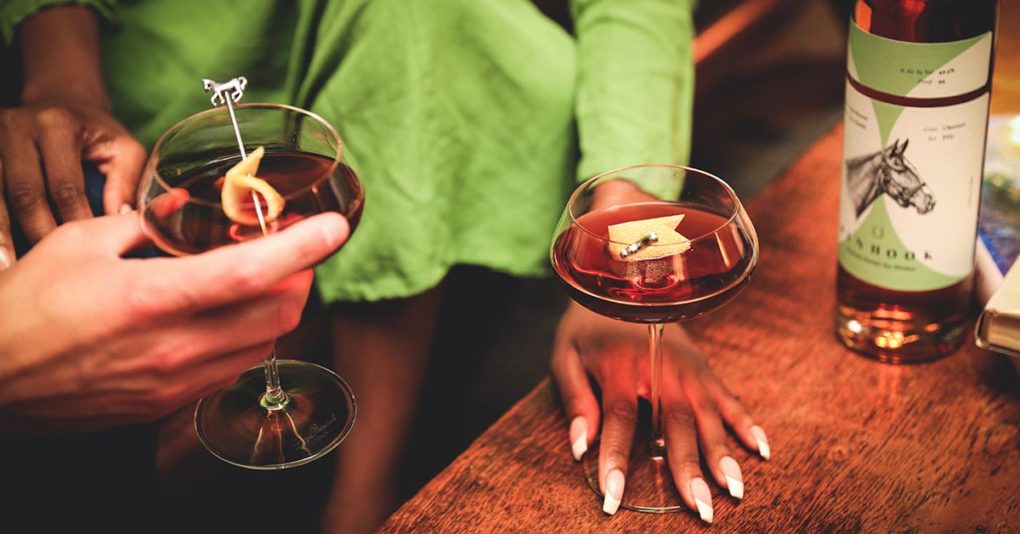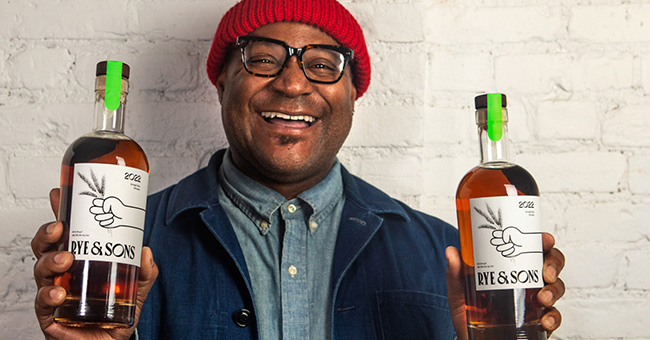
The racehorse on the Pinhook label may shout “Kentucky”, but its winemaker-inspired business model is one way this brand has crafted a unique identity in a crowded category.
American whiskey is traditionally blended to replicate an established flavor profile, then bottled at a fixed proof, year in and year out. Whiskey brands are typically meant to be synonymous with a specific flavor profile, explained Pinhook CEO Alice Peterson, but the ingredients, the method of production, and the aging process work so that no two barrels are alike.
“The act of blending barrels into a batch and having that batch be as close as possible to identical to the whiskey from before is a very specific end-goal that requires a lot of skill,” she said. “But it’s not the only goal that’s possible.”
Breaking with this standard, Pinhook treats each set of barrels as a new vintage, shaped by the natural variations in the ingredients and the elements. Working in small batches, they craft each vintage to “express the best whiskey” rather than the same whiskey, and set the proof to optimize the unique attributes of that group of barrels.
“It actually is much more like wine than it is manufacturing a product,” she said
As a result, each label has a vintage, and the design changes slightly to reflect that, with pops of color and geometric patterns gearing away from more traditional brown or stout bottles on whiskey shelves.
Pinhook formed in 2014 as the brainchild of Sean Josephs, a restaurateur and certified sommelier who opened three American Whiskey bars and restaurants. The company sold 22,000 9-liter cases last year, and now produces a flagship bourbon, rye, high proof versions and a vertical series, which allows consumers to follow a group of barrels as they age.
Guest collaborators, like winemakers and brewmasters, also have a hand in a special series. The brand is now in 30 U.S. markets, and minimized hiring sales staff by building “strong relationships” with its distributor teams, which include RNDC and Breakthru Beverage Group, as well as regional distributors, according to Peterson.
Josephs’ early obstacle as a restaurateur was the lack of accessible craft whiskeys under $100. So the business anchors around a flagship product that hovers at $40 that’s designed to offer the same accessibility as some of the biggest premium brands – sitting with Brown Forman’s Woodford Reserve on the shelf, for example – but “it’s perfect for someone who is looking for something a little different,” said Peterson. She suspects that’s why the company’s sales are 75% off-premise.
With American Whiskey on the rise (sales were by 10.5%, totaling $5.1 billion in 2022), Peterson argues that the bourbon business is different from other categories because it’s a collector’s drink; despite crowding on the shelf, there is room for new entrants without needing to displace other brands. But that presents a downside: there’s much more bourbon out there than is being consumed, she said.
“It means it’s hard to find your core consumer: the person who has that favorite bottle at home that they take a sip of every night or they use it to make themselves an old fashioned when they come home from work—you ideally want to be their main squeeze,” she said. “And it’s harder to find that because people are so interested in trying everything.”
Peterson is hopeful that the variety offered each year from its core portfolio, versus a constant push towards line extensions or one-time releases, will play well for capturing that loyal consumer over the long term. Meanwhile, to position themselves as an on-premise favorite, the company turned to a winemaker.
After a collaboration release with one of the country’s best-known sommeliers, André Mack, the company partnered further with Mack, whose Maison Noir Wines have made a splash as unique and distinctive garage wines, initially created for some of New York’s best restaurants. If Mack was to create a whiskey, what would it be? The team landed on a rye, an insider whiskey-drinker’s choice that is also beloved behind the bar. It seemed like there was a whitespace there too: competitors like Rittenhouse may have gotten placement on menus for its value, but most accessible ryes lacked a brand story, said Peterson.
“He was excited to offer a counterpoint to that and to try to take rye out of the stuffy men’s club Manhattans and into a more kind of contemporary culture in which a wider set of people are represented,” Peterson said.
Rye and Sons, which boasts a neon green top and tattoo-like illustrated label, was released last fall in a handful of markets through the same shared distributors as Pinhook and Mack’s wines. It’s now in ten markets, giving the team data to start evaluating where the brand is resonating. With a retail price point of $30, so far it’s been a welcome addition to cocktail programs, and getting traction with wine retailers.
“They’re excited about the story and the idea that there is a person behind it, and I’m sure to some extent as well, a person who has a wine sensibility,” Peterson said.
